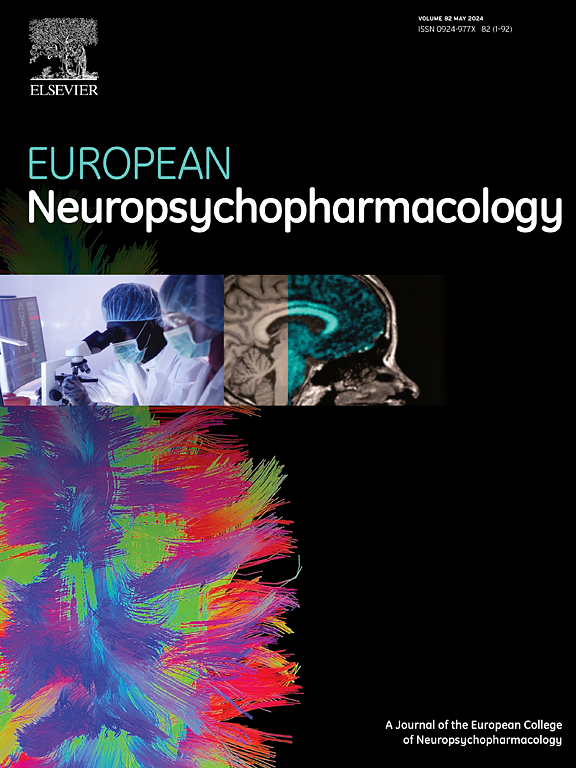Measuring the clinical dimensions of negative symptoms through the Positive and Negative Syndrome Scale
IF 6.7
2区 医学
Q1 CLINICAL NEUROLOGY
引用次数: 0
Abstract
The negative symptoms of schizophrenia can determine functional outcome in patients. Despite its clinical significance, no treatment exists to date, as numerous pharmacological and non-pharmacological clinical trials have failed to demonstrate efficacy. Many of these trials evaluated negative symptoms as a single clinical construct. However, consistent evidence in the past two decades has found that negative symptoms constitute at least two independent clinical dimensions, namely deficits in motivation and pleasure (MAP) and in emotional expression (EXP). These dimensions are best evaluated using new assessment tools, such as the Brief Negative Symptom Scale (BNSS). However, older assessment tools, and particularly the Positive and Negative Syndrome Scale (PANSS), remain widely used in past and current research. Here, we sought to predict BNSS MAP and EXP dimensions from the PANSS. Using complementary modelling approaches across three heterogeneous, multi-centre, multi-culture patient samples (n = 1241 patients, 1846 observations), we show that MAP can be estimated (43–60 % variance explained) predominantly using N2 and N4. Moreover, EXP can be estimated predominantly using the two PANSS items N1 and N6 (55–81 % variance explained across models and samples). Additionally, PANSS-derived MAP shows associations with functioning similar to those measured by the BNSS MAP dimension. Together, our results suggest that while EXP can be reliably estimated from PANSS, MAP cannot be consistently estimated from PANSS across samples and cultures. This warrants caution when using the PANSS to estimate MAP and emphasises the need for using the newer assessment tools for negative symptoms.
用正、阴性证候量表测量阴性症状的临床维度
精神分裂症的阴性症状可以决定患者的功能预后。尽管它具有临床意义,但迄今为止还没有治疗方法,因为许多药物和非药物临床试验都未能证明其有效性。许多这样的试验将阴性症状作为单一的临床结构进行评估。然而,过去二十年的一致证据发现,阴性症状至少构成两个独立的临床维度,即动机和愉悦(MAP)和情感表达(EXP)的缺陷。这些维度最好使用新的评估工具进行评估,例如简短负面症状量表(BNSS)。然而,较旧的评估工具,特别是阳性和阴性综合征量表(PANSS),在过去和现在的研究中仍然广泛使用。在这里,我们试图从PANSS中预测BNSS MAP和EXP维度。通过对三个异质、多中心、多文化患者样本(n = 1241例患者,1846个观察结果)的互补建模方法,我们发现主要使用N2和N4可以估计MAP(解释43 - 60%方差)。此外,EXP可以主要使用两个PANSS项目N1和N6来估计(在模型和样本之间解释55 - 81%的方差)。此外,panss衍生的MAP显示出与BNSS MAP维度测量的功能相似的关联。总之,我们的结果表明,虽然EXP可以从PANSS中可靠地估计出来,但MAP不能从不同样品和培养物的PANSS中一致地估计出来。在使用PANSS来估计MAP时,这需要谨慎,并强调需要使用较新的阴性症状评估工具。
本文章由计算机程序翻译,如有差异,请以英文原文为准。
求助全文
约1分钟内获得全文
求助全文
来源期刊

European Neuropsychopharmacology
医学-精神病学
CiteScore
10.30
自引率
5.40%
发文量
730
审稿时长
41 days
期刊介绍:
European Neuropsychopharmacology is the official publication of the European College of Neuropsychopharmacology (ECNP). In accordance with the mission of the College, the journal focuses on clinical and basic science contributions that advance our understanding of brain function and human behaviour and enable translation into improved treatments and enhanced public health impact in psychiatry. Recent years have been characterized by exciting advances in basic knowledge and available experimental techniques in neuroscience and genomics. However, clinical translation of these findings has not been as rapid. The journal aims to narrow this gap by promoting findings that are expected to have a major impact on both our understanding of the biological bases of mental disorders and the development and improvement of treatments, ideally paving the way for prevention and recovery.
 求助内容:
求助内容: 应助结果提醒方式:
应助结果提醒方式:


